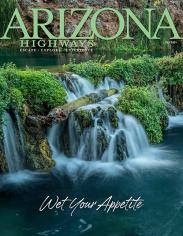The Gold King Mansion
In April 1929, the discovery of a vein of gold and lead ore in the Hualapai Mountains, near Kingman, spurred the development of the Gold King Mine. And today, a building known as the Gold King Mansion stands as a reminder of the area’s mining history.
The Gold King Mine’s proprietor was Paul M. “Paddy” Woods — who, according to a local legend, drove a large Cadillac to and from the mine. Another legend claims that the company’s secretary would literally ride shotgun, with a 12-gauge on her lap, as the two ferried the mine’s payroll to the site from Los Angeles.
